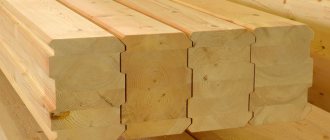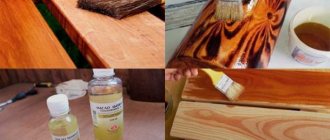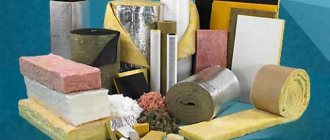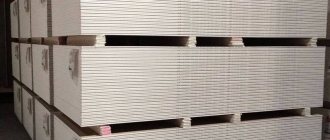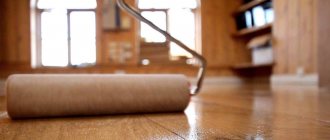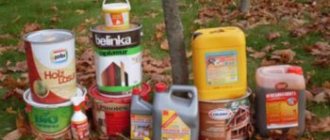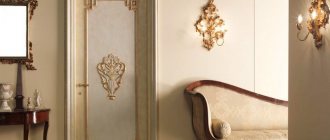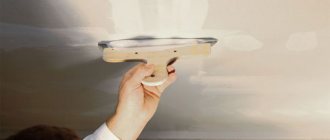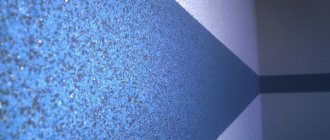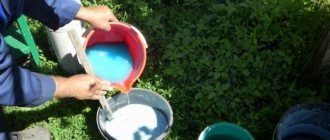Fire retardant composition for a wooden house
Today, the Russian chemical industry offers many different fire-fighting compounds. Choosing a quality product among this abundance is quite difficult. Experts in the field of wood fire protection recommend using impregnations from the Pirilax series , developed by. These compositions are characterized positively by professionals and are currently one of the most effective fire protection products on the market. The Pirilax composition effectively prevents wood fire[2]. In addition, these compositions are safe for animals and people.
Fire retardant compounds for wood "Pirilax" contain non-washable antiseptics, which at the same time allows you to preserve the beauty of the wood and improve the performance characteristics of the wooden structure.
Treating wood with a fire retardant compound
The compositions should be applied to clean, unpainted wood using a brush, roller or spray. After impregnation, the wood should not be subjected to mechanical processing, as this will lead to a loss of protective properties. Attention! Treatment of prepared wood with the selected fire-retardant (fire-bioprotective) composition must be carried out in strict accordance with the instructions!
The tree will be reliably protected from fire after a single treatment with Pirilax at a consumption of 280 g/m2. Fire protection work with Pirilax impregnations can be carried out at low temperatures down to -25°C. To do this, the composition must be heated to 50-60°C or diluted with hot water in a ratio of 1 kg of impregnation per 0.5 kg of water[3].
- Federal Law No. 123-FZ “Technical Regulations on Fire Safety Requirements”
- Biopyren "Pirilax" characteristics and description
- Features of the use of biopyrene "Pirilax"
How to protect your roof from wood rot
Drying and protecting wood from damage by fungal diseases are of great importance for the durability of wooden structures and structures.
Increased humidity of wood in structures creates conditions for it to be damaged by wood-destroying fungi. As a result of the activity of house fungi, wood rots.
Wood rotting
occurs as a result of the activity of house mushrooms: true, white, filmy house mushrooms, as well as shaft or lamellar house mushrooms.
The mycelium of house mushrooms feeds mainly on wood fiber (cellulose), causing destructive rotten wood rot
, leading to the destruction of wooden elements. The life activity of house mushrooms occurs at temperatures from +3°C to +45°C and begins at an average wood moisture content of at least 20%.
Options for damage to damp wood by rotten and sieve rot
are shown in Fig. 2.
Rotten rot
(external and internal) - in the affected wood, numerous longitudinal and transverse cracks are visible (Fig. 2, item 1). The color of the affected wood ranges from brown to dark brown. Such rot breaks up into prisms and is easily rubbed with your fingers.
Sieve rot
(Fig. 2, item 2) are located in the area of the core or mature wood. Such rot represents areas of flabby wood that easily deforms when pressed. The color of the affected wood is brown or red-brown with small white or yellowish spots stretched along the grain.
The main prevention of the fight against rotting of elements of wooden structures is protection from constant and systematically repeated moisture, as well as ensuring their good ventilation.
When carrying out repairs to prevent the development of fungal diseases
the following requirements must be met:
- New wood brought in for repairs must be insulated from damage.
- All rotten wood should be removed by first spraying structures affected by house fungi and healthy wood adjacent to the affected areas.
- Rotten elements are removed, including healthy areas of at least 40...60 cm in length.
- Surface rot is removed by stripping the surface of the structures down to layers of healthy-looking wood - with normal color and strength. It is necessary to create appropriate conditions for drying the wood - air and intensive natural ventilation.
- All cleaned rotten wood, fungal deposits, etc.
burned in the furnace of a boiler or on a fire. - Brick surfaces that came into contact with rotten elements of wooden structures and located close to them should also be disinfected after cleaning them from fungal growths. To do this, they are sprayed with antiseptics and burned with blowtorches, observing fire safety requirements.
- When performing work to remove affected areas of wooden basement structures, it is also necessary to remove the top layer of earth 10...15 cm thick with mandatory preliminary disinfection of it with a solution of copper or iron sulfate. The soil should be taken to a landfill or buried outside the construction area.
- When carrying out repairs, constructive measures are provided to ensure the creation of a normal regime for wooden structures (waterproofing, installation of vents, blind areas, protection from precipitation).
READ ALSO: How to insulate an attic, insulating a cold attic with your own hands
From chemicals used to kill fungus
, the most effective are 5...10% aqueous solution of copper or iron sulfate, as well as antiseptic paste grade 200.
To combat rotting of wooden structures
use antiseptics.
Term
The action of antiseptic
depends on a number of reasons
:
- Conditions of service of the structure.
- Depth of penetration of antiseptic into the thickness of wood and its quality.
- Concentration of solution and type of wood.
Antiseptics are divided into two groups
: water soluble (inorganic) and oily (organic). Antiseptics are required to be highly toxic (poisonous) to wood-growing fungi and to retain this property for a long time. At the same time, it is necessary that they are harmless to people, do not destroy metal fasteners (bolts, plates, nails, etc.) and penetrate most deeply into the thickness of the wood.
The moisture content of wood to be impregnated with antiseptics should not exceed 25%. At higher humidity, the quality of antiseptic
is greatly reduced, and when coated with oily antiseptics, it does not reach the goal and may even be negative. The required moisture content of wood may be greater depending on the method of antiseptic treatment of it, for example, when soaking in hot baths.
Wood surface before antiseptic treatment
must be thoroughly cleaned of bark, lime, ice and dirt.
Protective treatment
of elements should be carried out after they are fully prepared:
- in places of filing;
- in places where cuts are made;
- in places of drilling, etc.
Antiseptic treatment with aqueous solutions
undisassembled (repaired) structures and assortments should be carried out mainly using a hydraulic remote control, directing the jet along all cracks and places of mating (connections) of structures.
A. Antiseptic treatment of wood with aqueous solutions
To prepare an aqueous solution
the water must be heated to a boil, after which the antiseptic with dye is poured in and the composition is mixed with wooden spatulas until completely dissolved.
Surface antiseptic
is carried out twice, without skipping, over the entire surface to be treated (with breaks of up to 2 hours to dry the first layer) by spraying from a hydraulic remote control or applying brushes.
B. Antiseptic treatment of wood with oily antiseptics
Oily antiseptics
applied to surfaces by mechanized or manual methods.
It is NOT RECOMMENDED to process materials near furnaces and pipes (flammable).
B. Antiseptic treatment of wood in hot baths
Hot baths with an aqueous antiseptic solution are used for mass shallow antiseptic treatment
elements from the small timber range.
The exposure time of products and timber in a hot aqueous solution at temperatures up to +90°C is 20...25 minutes, in oily antiseptics at temperatures up to +70°C is 25...30 minutes.
When impregnating wood in baths
:
- the wood is placed in a container and loaded into the bath;
- < hot solution is periodically added to the bath.
D. Dry antiseptic treatment of wood
Dry antiseptic
For safety reasons, this can only be done indoors.
Dry antiseptic treatment of tow or felt
is done as follows:
- before processing the material, felt or tow is unrolled and cut to the required size;
- felt or tow is spread on the striker (plank flooring) in a layer of up to 5 cm;
- sprinkle with powdered antiseptic
and beat the powder into tow or felt with sticks; - then the material is turned over and the operation is repeated;
- The material processed in this way is removed from the striker and placed in a stack before being placed into the case.
D. Wet treatment of felt and tow with an antiseptic
Antiseptic with aqueous solutions
felt or tow as follows:
- before antisepticizing the material with aqueous solutions, bales of felt or tow are unrolled and cut to the required size;
- placed in a bath and filled with an aqueous antiseptic solution
; - After impregnation of the material with the solution, the material is wrung out and placed on boards to dry.
Antiseptic with an oily composition
is done as follows:
- before antisepticizing the material with oily solutions, bales of felt or tow are unrolled and cut to the required size;
- spread on lattice boards and pour an oily solution
; - After impregnation of the material with the solution, it is dried.
K. Wet treatment of sawdust with an antiseptic
Mixing sawdust with antiseptics is carried out at a sawdust moisture content of 30...40%.
Sawdust is antiseptic as follows:
- Before treating with an antiseptic, the sawdust is sifted, bark and wood chips are removed;
- sawdust is poured onto the striker and watered with an antiseptic solution
; during the watering process, the sawdust is mixed so that all the material is saturated with the antiseptic; - After impregnating the sawdust with the solution, they are dried.
For cleaning and treating wood surfaces
Antiseptics will be required according to Table 1.
Table 1: Consumption of antiseptics per 1 m² of wood surface
| p/p | Name of antiseptic | Unit. | For ordinary mass wood processing | The same for individual places | The same for double wood processing |
| 1 | 2 | 3 | 4 | 5 | 6 |
| 1 | Antiseptic aqueous solution | l | 0,7 | 0,7 | 1,4 |
| 2 | Bitumen paste grade 100 | kg | 0,342 | 0,320 | 0,678 |
| 3 | Same brand 200 | « | 0,652 | 0,620 | 1,290 |
| 4 | Oily antiseptic | kg | 0,608 | 0,580 | 1,220 |
| 5 | Coal paste grade 100 | kg | 0,462 | 0,448 | 0,920 |
| 6 | Same brand 200 | « | 0,863 | 0,848 | 1,720 |
| 7 | Extract paste grade 100 coal | kg | 0,472 | 0,465 | 0,960 |
| 8 | Same brand 200 | « | 0,619 | 0,60 | 1,24 |
| 9 | Silicate paints (SK-G, SK-KHEM, SKL) | kg | 0,564 | — | — |
| 10 | Chlorinated paraffin emulsion | kg | 0,5 | — | — |
READ ALSO: How to install and lay slate on the roof, how to lay sheathing and strengthen the slate, calculation of slate on the roof
Considering toxic and dangerous
In terms of fire protection
properties of antiseptics
, their storage must be carried out in accordance with special instructions.
Preparation and application of antiseptic preparations
should be done in overalls (overalls or clothing that tightly covers the body, gloves and boots), and when working with powdered antiseptics, in addition, in goggles and respirators.
To protect structures from weathering, moisture, and decay, it is RECOMMENDED to use various paint and varnish coatings. Natural drying oils are a common type of coating, but over time their protective properties weaken. Adding resins and pigments to drying oils increases the durability of coatings
.
Good protective properties
have artificial drying oils.
Glued beams coated with oxol linseed oil
do not delaminate in the open air and do not warp, whereas in beams without coating, defects appear after 7...12 months.
The use of oil paints on artificial or natural drying oil is quite effective.
Paints and enamels have good properties
filled with
aluminum powder
. Aluminum flakes form a continuous reflective surface without interfering with moisture and air exchange in wood. This advantage of the powder is complemented by its water-repellent properties, lack of swelling and ability to reflect heat rays.
Parts painted with aluminum paints are much more flammable than unpainted wood. It is advisable to use such paints to cover adhesive beams, trusses, wall panels, canopies, canopies over platforms.
High protective effect against house fungi
has an antiseptic based on waste from the production of the product ionol.
It contains low molecular weight polyisobutylene, lysols, ionol and volatile organic liquids. Products are antiseptic
in baths or by spraying. A protective film of lysols and ionol is formed on the surface of the impregnated wood, and the solvent evaporates without additional drying.
Antiseptic
RECOMMENDED for the protection of wooden elements, floors, cooling towers, bridges, sleepers.
Another method of protective treatment of wooden parts and structures is surface coating with brushes or spraying with adhesive components from spray guns. Adhesive components can be sulfate alkalis, bitumen, clay, coal tar varnish
etc.
Supporting parts of structures
.

